What's New
Displaying results 3031 - 3040 of 4052
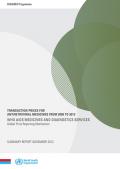
Resource | Publications,
The Global Price Reporting Mechanism (GPRM) contains information on transaction prices, sources and quantities of antiretroviral medicines (ARVs), tuberculosis and malaria drugs and HIV/AIDS, tuberculosis and malaria diagnostics purchased by HIV/AIDS, tuberculosis and malaria programmes in low-income countries1, lower middle-income countries2 and upper middle-income countries. Countries have been classified according to the World Bank Atlas calculation method.

Resource | Publications,
Despite Cambodia’s significant strides in reducing HIV prevalence in recent years, pockets of new infections remain high among certain sub-populations, particularly among entertainment workers. Notably, many entertainment workers are young and at double risk of HIV infection and at risk of exploitation, violence and abuse.
This important qualitative study was conducted in four urban cities as a follow up to the 2010 Survey among Most at Risk Young People to provide insights into the life experiences and risks young women, men and transgendered persons are exposed to. While this is not a nationally representative study, it provides informative data and rich insides into young people’s experiences.
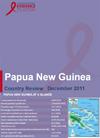
Resource | Fact Sheets,
The first case of HIV in Papua New Guinea (PNG) was reported in 1987. By 2004, the country had declared a generalized epidemic, the fourth country in the Asia Pacific region to do so. Although the HIV epidemic in Papua New Guinea is now the largest and the only generalized one in the Pacific, recent analysis shows that the epidemic is starting to level off.
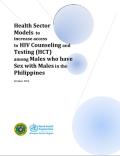
Resource | Publications,
Urgent action is needed to control the expanding HIV epidemic in the Philippines. After many years of stable, low-level transmission, the number of cases detected has risen an average of 62% in each of the past five years; compounded, this is almost a 10-fold increase in the number of cases detected each year. It is clear which population is being affected: in the first half of 2012, 96% of newly identified cases were males, and 87% of all newly identified cases were males who have sex with males (MSM). As a result, the HIV prevalence in MSM is now ranging from 2-5% and climbing.
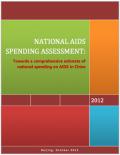
Resource | Publications,
Comprehensive information about national spending on AIDS response is crucial for health policy development and evaluation. This study provides a comprehensive overview of the overall level and composition of major investments in national AIDS response in Dehong Prefecture introducing National AIDS Spending Assessment (NASA) as a method for the purpose.
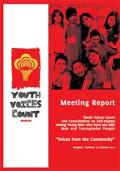
Resource | Publications,
This report documents, the presentations and discussions made during the Youth Voices Count 2nd Consultation on Self-stigma Among Young Men who have sex with men and transgender people: Voices from the community, held from 2-5 October 2012 at Bangkok, Thailand.
The primary objective of this regional consultation was to introduce the YVC network and its members and to hear the voices of community people on the self-stigma in young MSM and TG groups in order to develop key recommendations targeting policy-makers and programmers on addressing these issues.

Resource | Presentations,
Regional and country posters were prepared by UNAIDS Regional Support Team Asia-Pacific, UNAIDS Country Offices, and HIV and AIDS Data Hub for Asia-Pacific based on the following published sources of data:
1) HIV Sentinel Surveillance Surveys
2) Behavioural Surveillance Surveys
3) Integrated Bio-behavioural Surveys
4) United Nations General Assembly Special Session on HIV and AIDS (UNGASS) Country Progress Reports 2008 and 2010
5) Global AIDS Response Progress Reports 2012

Resource | Presentations,
Getting to Zero in Asia and the Pacific: Focus and Innovation
UNAIDS Regional Management Meeting October 29, 2012
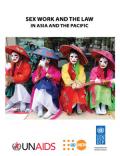
Resource | Reviews and Snapshots,
The report is intended to provide an evidence-base for: policy makers working in government, regional and multilateral organizations; parliamentarians; members of the judiciary; civil society organizations; donor agencies; and sex workers and their organizations engaged in advocacy to improve the legal and policy enabling environment for HIV responses. The study focuses on 48 countries of the Asia Pacific region, with an emphasis on low and middle-income countries.
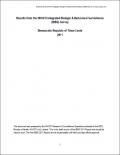
Resource | Publications,
The MoH HIV/STI unit conducted active surveillance for select STIs (syphilis, Chlamydia, hepatitis B, and hepatitis C) and HIV rapid testing in 5 districts of Timor-Leste: Covalima, Oecusse, Bobonaro, Dili, and Baucau. The HIV/STI unit also assessed the behavioral characteristics of specific high-risk target groups in those districts: female sex workers (FSW), males who have sex with other males (MSM), and uniformed personnel (UP). These data will help the HIV/STI program quantify HIV/STI prevalence in Timor-Leste and improve its programs.





